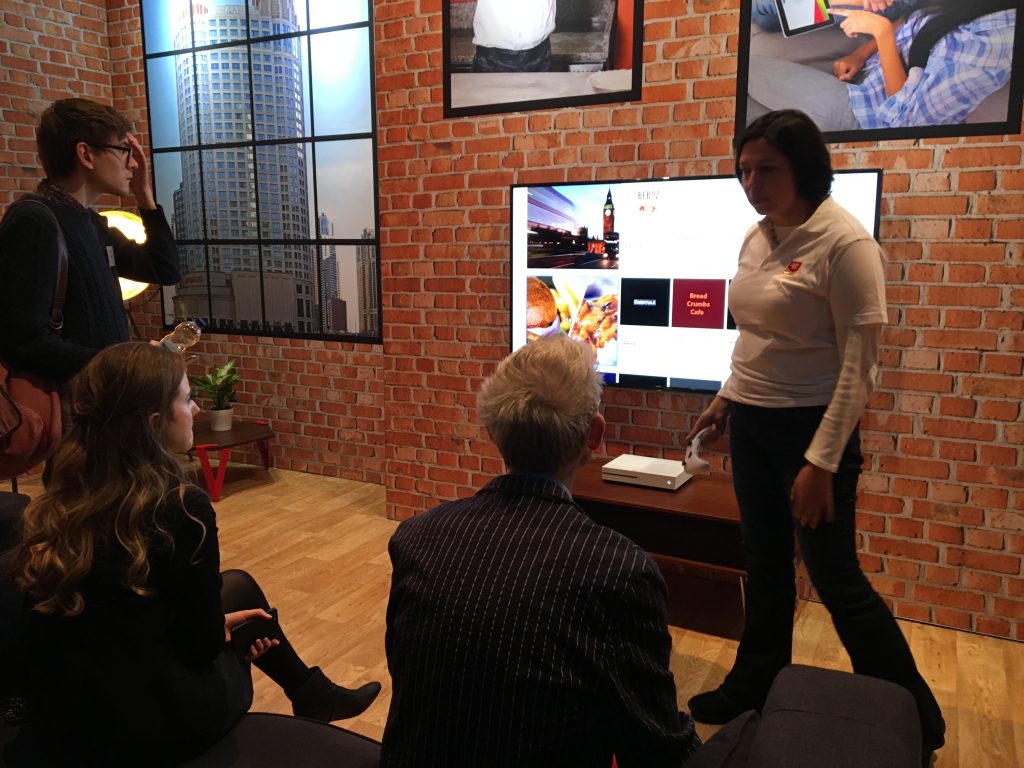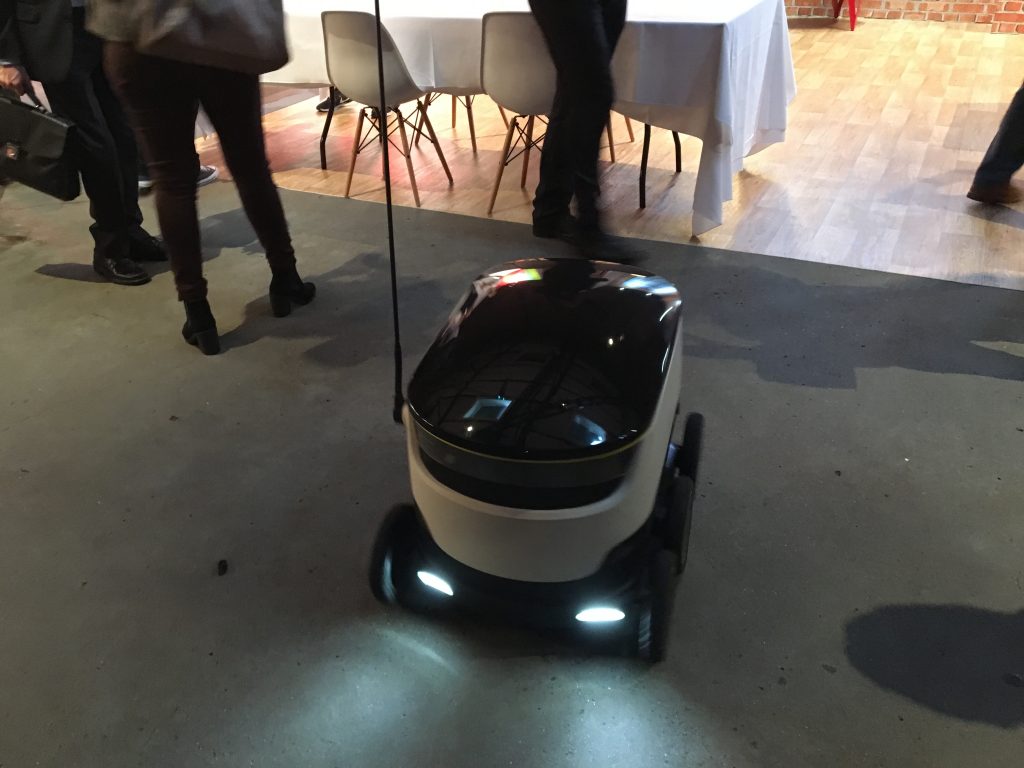Just Eat showcases innovative “food tech” - the future of online delivery
Online food delivery service Just Eat has a number of ideas for how food tech will influence the future of online food delivery, including technologies such as augmented reality (AR) artificial intelligence (AI) and robotic delivery carriers.
There have been a lot of strides made in the food delivery market – barely anyone picks up the phone to order a takeaway anymore and thanks to particular services you can now get food brought to your home from places that don’t even deliver.
Just Eat wants to be at the forefront of the delivery market. Not just content with offering a fast online service for choosing and ordering takeaway, it recently showcased what it thinks the future of food delivery will look like.
The future of ordering food
The first step in the takeaway process is ordering food, and Just Eat has several new ideas about how these orders can be placed.
It seems as though Just Eat plans to thoroughly embed itself in the Internet of Things, with many connected devices around the house displayed in its demo space through which to order meals.
The first was through Amazon Alexa, the voice-driven artificial intelligence which allows users to talk to products such as the Amazon Echo and gain a response/action.
Users will be able to speak to the Echo and place and order through Just Eat. Alexa will repeat the order back to you and allow you to pay, presumably using stored payment details, then tell you how long until your delivery arrives.
The Apple TV was next with an application connecting to smartphones on the same network, allowing a group of people to make their food choices separately, which then contribute to a single group order which is sent to a vendor.
The Apple TV app prompts people contributing to the order to open the Just Eat on their iPhone or iPad and make their food selection – once they have finished their order appears on the screen along with how much they owe.
It was unclear from the demo whether you can then pay separately, but this would be the ideal in a group situation in the future – everyone orders what they want, pays what they owe, and the restaurants receives one huge list to send to a single address. Simple.
Just Eat claims this application should be available in 2017.
A new Xbox One application was also revealed, which the Just Eat team hopes will be available to use by Christmas 2016.

Similarly to the Apple TV app, the Xbox One application will allow users to browse their previous orders, search for restaurants or explore popular dishes before ordering and paying.
Some of the technology was behaving badly on demo day – for example pair of Augmented Reality glasses meant to display physical representations of food items on a flat surface in front of the user had a whole selection of sushi floating eerily in mid-air.
But hitches are to be expected in the early stages of technology adoption, and there is a clear use case for an AR menu allowing a customer to actually explore what a dish will look like before they order it.
It was particularly useful to see portion sizes – too often when food turns up some dishes can either be too much or not enough.
As with many AR technologies though, you can look a bit silly using it – the hope in the future is that you can use your hands to select and order menu items displayed in front of you through your AR device, which in this case is a HoloLens.

Just in case you have a problem with these services, Just Eat has also been working on a customer care chatbot using the Microsoft Bot Framework to help deal with queries, as well as a Facebook Messenger chatbot you can use to order food or get suggestions on what to eat.
The possible future of food delivery (and the transport industry)
Roaming the floors of the trendy Shoreditch warehouse Just Eat has its showcase in were self-driving delivery robots.
These have already been on trial for pizza firm Dominos in New Zealand, and it also experimented with delivering pizza by unmanned aerial drone in late 2016.
The thing to worry about most for these would be vandals – why mug a pizza boy on his bike who has the potential to defend himself when you can intercept and destroy a lone robot?
Again, there are kinks to work out, but the Just Eat robot was happily wandering around amongst customers during the demo.

These self-driving robots would detect if someone was walking in front of them and take a different path to their destination.
It’s also possible that they’d be more capable of keeping food hot during its journey from restaurant to your door than the traditional thermal bag or tin container food is delivered in now.
Also, you won’t have to tip a robot – at least not until we enter the dystopian future in which robots become self-aware and gain equal rights.
Something for the restaurant owner
Once orders have been placed, food has been delivered and payments have been made, any restaurant owner worth their salt should be using the data collected during this process to work out how to improve.
One of the pieces of kit Just Eat was showcasing included an AR system that food retailers can use to gain data insights – both from their own data and data collected by Just Eat.
Restaurants can use the system to determine how much their revenue would increase if they began delivering to a new area, how many orders they can expect to have from that new area in a certain time period and whether such an expansion would be worthwhile.
The demo system didn’t do much more than this, but it’s the type of technology which, in the future, could seriously enhance a retailer’s capability to make accurate and profitable business decisions – and ensure we all have access to more tasty food.



